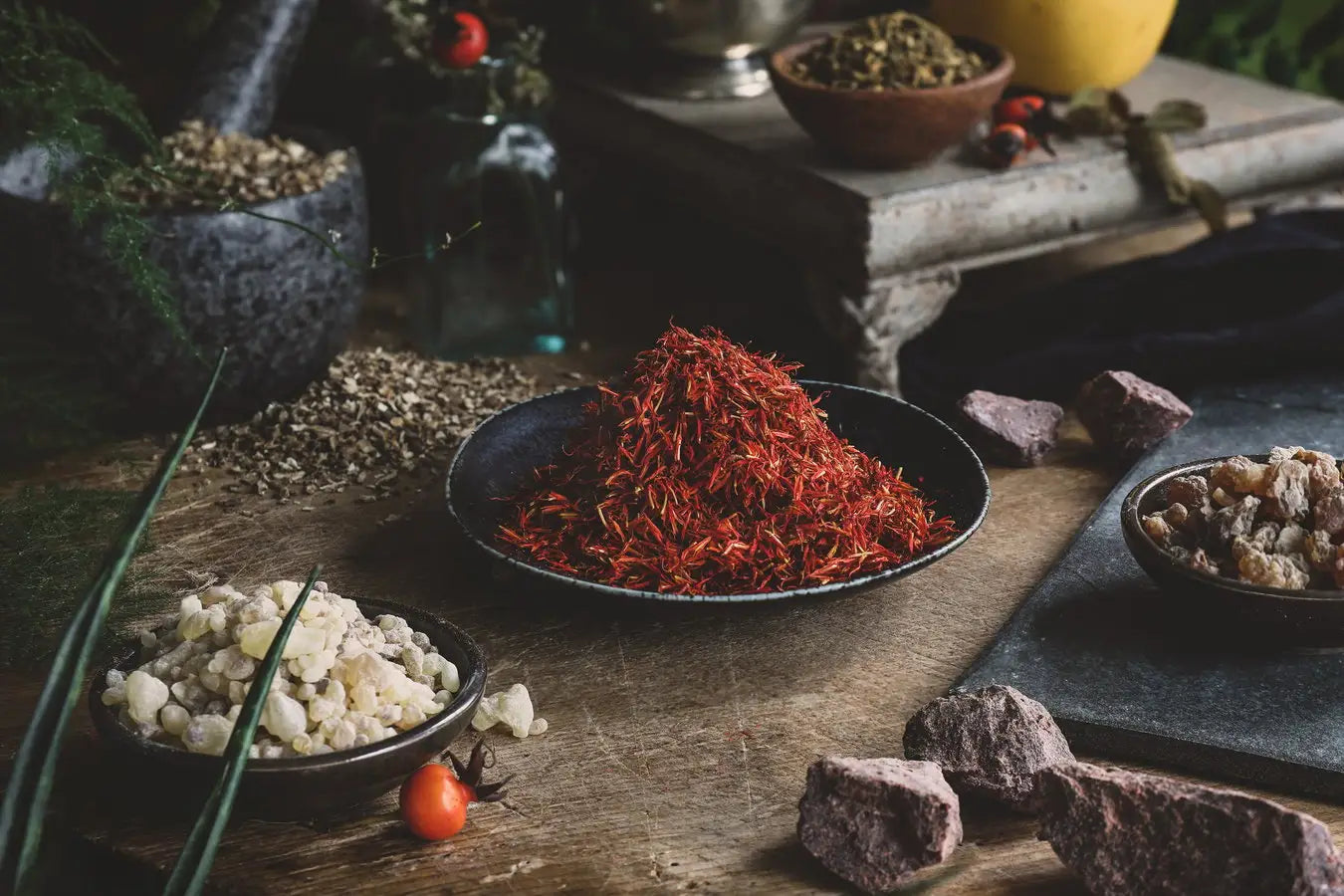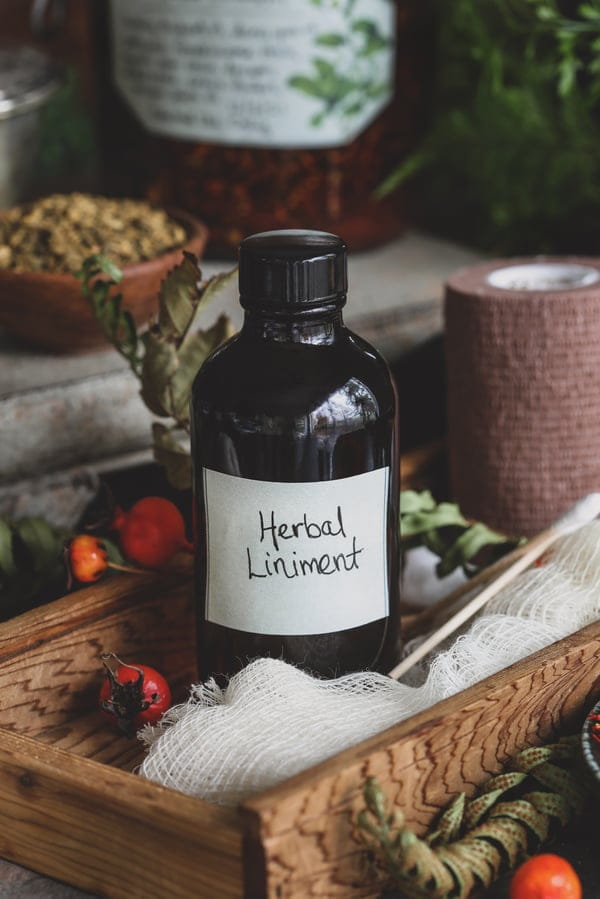Healing Through Acupuncture: A Gentle Approach
East Asian Herbal Liniment + Poultice Recipe
My acupuncture clinic is perhaps similar to a martial arts studio. Nobody punches or kicks in my clinic, at least not on purpose, but I support people as they fight through aches and pains from injuries both acute and chronic. After treating pain-related conditions with acupuncture, I often aid recovery by rubbing a liniment, or Die Da Jiu (跌打酒), into achy joints and tissues. The aromatic herbs and precious resins in this formula scent my treatment room like an ancient apothecary, while moving stuck traumas, helping tissues release their stored issues, and lending a golden glow to affected areas. Liniments are plants infused in alcohol, for topical use. Die Da Jiu (跌打酒) is a classic and constantly changing liniment that literally translates as “Fall & Hit Wine,” and is ubiquitously sold in various forms throughout the USA and southeast Asia. Many East Asian martial arts practices make their own versions to facilitate recovery from contusions, sprains, and strains.

Author Tom Bisio popularized a version of this formula in his 2004 book, A Tooth from the Tiger’s Mouth. I lightly modified Bisio’s formula to facilitate procuring herbs for the western herbal practitioner by removing:
- Gardenia fruit (梔子 zhi zi. Gardenia jasminoides, Rubiaceae)
- Phellodendron bark (黃柏 huang bai. Phellodendron chinense, or P. amurense, Rutaceae)
- Sweetgum fruit (路路通, lu lu tong. Liquidambar formosana, Hamamelidaceae)
I replaced the above herbs with:
- Arnica flowers (Arnica spp., Asteraceae)
- Oregon grape root (Mahonia spp., Berberidaceae)
Die Da Jiu Liniment
This liniment includes blood-moving botanicals that actively break blood stasis, with three roots, three resins, and two flowers. The roots, resins, and flowers harmonize well, balancing their energetically cooling and warming qualities. Turkey rhubarb, arnica, and Oregon grape root are energetically cool to swelling. Dong quai, safflower, and frankincense are energetically warming, promoting circulation, helping to release pain, and breaking up stagnation.
Ingredients
- 12 g organic turkey rhubarb root (大黃 da huang)
- 12 g organic dong quai root (當歸 dang gui)
- 12 g organic safflower (紅花 hong hua)
- 12 g organic frankincense resin (乳香 ru xiang)
- 12 g organic myrrh gum resin (沒藥 mo yao)
- 12 g organic dragon’s blood resin (血竭 xue jie)
- 12 g organic arnica flowers
- 12 g organic Oregon grape root
Directions
- Hammer or chop your ingredients into smaller pieces.
- Add all of the ingredients into a glass jar, then cover with up to 1 gallon of 80 to 100 proof alcohol, such as vodka or rice wine.
- Cover with wax paper, then cap your blend. Store out of direct sunlight.
- Vigorously shake your formula daily, for at least 6 weeks.
- Strain formula into smaller glass bottles.
- Make sure that your label includes the name, date, ingredients… and, “external use only!”
Pro Tips
- The resins may become sticky when warm, so process after freezing, or simply purchase in powder form.
- Note that arnica is currently on the United Plant Savers Species At-Risk List. Purchase only from trusted suppliers, and ideally cultivated varieties!
Cautions
- Only apply liniment topically to unbroken skin.
- Do not ingest.
- Avoid mucous membranes, open wounds, and cuts.
- This liniment is a strong local circulatory stimulant, so do not apply to the lower abdomen of pregnant women.
- Please consult with a qualified healthcare practitioner before using if you have any comorbidities, sensitive skin, or other complications.
To Use
- Gently pat a small amount of liniment to the area.
- Massage focused areas of tenderness with small circles, or larger areas by following the longitudinal direction of muscle fibers, and into muscle attachments.
- Consistently use liniment to support healing and full recovery.
Liniment Poultice
The botanical actions of alcoholic preparations are quickly delivered to the local area, but also evaporate quickly. Increase contact time with the liniment by creating a basic poultice, and leaving it on overnight.
Directions
- Wrap or tape gauze over the affected area, then wet the bandage with liniment, until it soaks through to the skin.
- Cover with an elastic bandage, saran wrap, or more gauze, and go to bed.
- Remove or replace in the morning!
Make your own! Experiment with the ingredients to suit your unique body, lifestyle, and budget. Keep playing hard, and keep this topical preparation handy to meet the inevitable slings and arrows of an active life. Enjoy!







Leave a comment